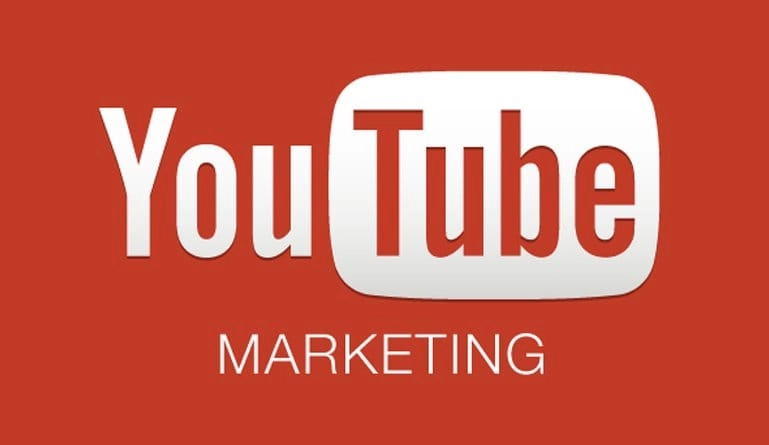Table of Contents
10 Tips for Creating High Converting YouTube Ads: A Comprehensive Guide
YouTube advertising is one of the most effective ways to reach a vast audience, build brand awareness, and drive conversions. With over 2 billion logged-in users per month, the platform offers unparalleled opportunities for marketers. However, creating high-converting YouTube ads requires more than just uploading a well-produced video. Success hinges on a combination of creativity, strategy, and data-driven optimization.
In this guide, we’ll explore ten actionable tips for creating YouTube ads that convert. By focusing on each step, from goal setting to performance monitoring, you’ll be well-equipped to create campaigns that resonate with your audience and deliver measurable results.
1. Start with Clear Goals
Before you even begin scripting or filming your ad, it’s essential to define clear and measurable goals. Without specific objectives, your campaign risks lacking focus, making it harder to achieve desired outcomes.
Why Goals Matter:
Clear goals provide a roadmap for your ad strategy. Whether you’re aiming to increase brand awareness, drive website traffic, or boost sales, knowing your primary objective will shape every element of your campaign. For example, a brand awareness campaign may focus on creative storytelling, while a conversion-focused campaign emphasizes direct calls-to-action (CTAs).
How to Define Goals:
- Identify the key performance indicators (KPIs) that align with your goals, such as click-through rates (CTR) for traffic or conversion rates for sales.
- Break your goals into actionable steps. For instance, if your goal is to increase email sign-ups, your ad should guide viewers to a landing page optimized for conversions.
- Use the SMART framework: Ensure your goals are Specific, Measurable, Achievable, Relevant, and Time-bound.
2. Use High-Quality Visuals
YouTube is a visually driven platform, and low-quality visuals can undermine your ad’s credibility and appeal. High production values are essential to capture attention and convey professionalism.
Why Visual Quality Matters:
Viewers judge your brand within seconds of watching your ad. Blurry footage, poor lighting, or distracting visuals can cause them to lose trust in your message. Conversely, sharp, professional visuals create a strong first impression and encourage viewers to stay engaged.
How to Ensure High-Quality Visuals:
- Invest in good equipment, such as HD or 4K cameras and professional lighting kits. If budget is an issue, smartphones with excellent cameras can also deliver high-quality results when paired with proper lighting.
- Use tools like Adobe After Effects or Final Cut Pro to polish your visuals during post-production.
- Align your visuals with your brand identity. For instance, a luxury brand might use sleek, minimalist aesthetics, while a children’s toy brand may favor bright, playful visuals.
3. Craft Compelling Scripts
Your script is the backbone of your ad. It determines how your message is delivered, and a poorly written script can confuse or alienate your audience.
Why a Strong Script Matters:
A clear and concise script keeps viewers engaged while guiding them toward a desired action. It also ensures consistency between your visual content and message, creating a cohesive experience for your audience.
How to Craft a Great Script:
- Start Strong: Hook your audience in the first 5 seconds with a compelling question, bold statement, or engaging scenario. For example, “Tired of wasting hours on meal prep? We’ve got the solution!”
- Be Concise: Avoid overly long or complex sentences. Get straight to the point while maintaining a conversational tone.
- Incorporate Storytelling: A well-told story can evoke emotions and make your ad more memorable. For instance, share a customer success story or demonstrate a problem-solving scenario.
- Include a Clear CTA: Guide viewers on what to do next, such as “Visit our website for a free trial!” or “Click now to learn more!” Place your CTA prominently at the end of the ad for maximum impact.
4. Optimize for Mobile
With the majority of YouTube traffic coming from mobile devices, it’s crucial to optimize your ads for smaller screens. Ads that look great on desktop may not translate well to mobile, resulting in missed opportunities.
Why Mobile Optimization Matters:
Mobile users have shorter attention spans and are less forgiving of poorly formatted content. Ensuring your ads are mobile-friendly enhances viewer experience and increases the likelihood of conversions.
How to Optimize for Mobile:
- Use vertical or square video formats to take full advantage of mobile screen space. These formats ensure your visuals remain engaging and legible.
- Simplify your visuals and text. Avoid cluttered designs that can overwhelm viewers on smaller screens.
- Test your ad on mobile devices before launching to ensure it looks and functions as intended.
5. Leverage YouTube’s Ad Formats
YouTube offers a variety of ad formats, each suited to different campaign objectives. Understanding these formats allows you to tailor your ads for maximum impact.
Overview of Ad Formats:
- Skippable Video Ads: Ideal for awareness campaigns, as viewers can skip after 5 seconds.
- Non-Skippable Video Ads: Great for delivering concise, high-impact messages.
- Bumper Ads: Six-second, non-skippable ads perfect for reinforcing brand messages.
- Display Ads: Static ads that appear alongside YouTube videos, driving traffic to external sites.
- Overlay Ads: Semi-transparent ads that display over the video content.
How to Leverage Ad Formats:
Experiment with multiple formats to determine what resonates with your audience. For example, skippable ads may work well for broad storytelling, while bumper ads are better for quick, memorable taglines. Use YouTube Analytics to assess performance and refine your format choices over time.
6. Implement Strong CTAs
A clear call-to-action (CTA) is essential for guiding viewers toward your desired outcome, whether it’s visiting a website, signing up for a newsletter, or making a purchase.
Why CTAs Are Important:
Without a strong CTA, viewers may watch your ad but fail to take the next step. A well-placed CTA provides direction and urgency, increasing the likelihood of conversions.
How to Create Effective CTAs:
- Be Specific: Instead of vague phrases like “Learn More,” use action-oriented language like “Download Your Free Guide Now.”
- Place CTAs Prominently: Include your CTA both visually (as text on-screen) and verbally (as part of the script). For instance, a fitness app might say, “Click the link below to start your free trial!”
- Add Urgency: Phrases like “Limited Time Offer” or “Only 3 Days Left” encourage immediate action.
7. Target the Right Audience
Targeting ensures your ad reaches the people most likely to convert. YouTube’s robust targeting options allow advertisers to refine their audience based on demographics, interests, and behaviors.
Why Targeting Matters:
Even the best ad will fail to convert if shown to the wrong audience. Effective targeting minimizes wasted impressions and maximizes your return on investment (ROI).
How to Target Effectively:
- Demographic Targeting: Focus on age, gender, location, and income level to narrow your audience.
- Interest Targeting: Use YouTube’s interest categories to reach users who engage with topics relevant to your product.
- Custom Audiences: Create custom or lookalike audiences based on your existing customers or website visitors.
8. A/B Test Your Ads
A/B testing involves comparing two versions of an ad to determine which performs better. This method is invaluable for fine-tuning your campaigns and identifying what resonates most with your audience.
Why A/B Testing Matters:
Without testing, you risk relying on guesswork. A/B testing provides data-driven insights that help you optimize elements like visuals, scripts, and CTAs for better performance.
How to Conduct A/B Testing:
- Test one variable at a time, such as the headline, visuals, or CTA.
- Run each version of the ad simultaneously to ensure a fair comparison.
- Use metrics like click-through rate, conversion rate, and viewer retention to evaluate performance.
9. Monitor and Optimize Performance
Continuous monitoring and optimization are crucial for ensuring your campaigns achieve their goals. YouTube Analytics and Google Ads provide valuable insights into your ad performance.
Why Monitoring Matters:
Even well-planned campaigns require adjustments based on real-world performance. Regularly analyzing your data allows you to identify strengths, address weaknesses, and adapt to changing audience behavior.
How to Monitor and Optimize:
- Track key metrics such as views, CTR, conversions, and ROI.
- Identify trends in high-performing ads and replicate their elements.
- Pause underperforming ads and reallocate your budget to better-performing ones.
10. Utilize Remarketing
Remarketing targets users who have previously interacted with your website, channel, or ads. This strategy helps you re-engage an already interested audience and move them closer to conversion.
Why Remarketing Works:
Remarketing allows you to stay top-of-mind with potential customers. People who have previously shown interest in your brand are more likely to convert when reminded of your offerings.
How to Use Remarketing:
- Create personalized ads tailored to the viewer’s previous interactions. For example, show a product they browsed but didn’t purchase.
- Use sequential messaging to guide users through the sales funnel. For instance, start with an awareness ad and follow up with a conversion-focused ad.
- Combine remarketing with urgency to boost conversions, such as offering a limited-time discount.
Conclusion
Creating high-converting YouTube ads requires a strategic approach and a commitment to continuous improvement. By starting with clear goals, using high-quality visuals, crafting compelling scripts, optimizing for mobile, leveraging YouTube’s ad formats, implementing strong CTAs, targeting the right audience, A/B testing your ads, monitoring performance, and utilizing remarketing, you can create campaigns that drive meaningful results.
Remember, the key to success is experimentation and adaptation. Use data to refine your strategy and stay attuned to audience preferences, ensuring your YouTube ad campaigns remain effective in achieving your marketing goals.
Frequently Asked Questions
Social Blaze provides a comprehensive suite of features including social media scheduling, analytics, content libraries, team collaboration tools, RSS feed automation, and a browser extension to streamline your social media strategy.
Absolutely! Social Blaze is designed to cater to both small businesses and larger agencies, offering customizable solutions to fit various needs, whether you’re managing a single account or multiple clients.
Our AI assistant takes the hassle out of content creation by creating AI post content for you, think of it as your social media sidekick, saving you time while helping you level up your strategy with smart insights.
Yes! Social Blaze offers various integrations with popular platforms and tools, allowing you to streamline your workflow and enhance your social media management experience seamlessly.





